There’s never been a single drug developed for the number one killer of children. This must change now – Enough is Enough!
How is it possible that there hasn’t been one drug developed for the number one killer of children – brain tumors? It’s not because we don’t have the best minds dedicated to finding a cure – we do. No, it’s because these great minds don’t have access to the critical data essential to discovery. At Bridge To A Cure we are working to change that.
Here’s how. There are three components to make critical data available:
- Data collection
- Data storage
- Data access
In this month’s blog, we’ll address Data Collection. Bridge To A Cure is working to establish what data needs to be collected and in what format. The Pediatric Cancer Data Commons (PCDC) is one of the most important organizations working toward Bridge To A Cure’s goal to build a robust database to help beat childhood cancer. Through this effort, we’re creating a data dictionary for childhood brain tumors so that the healthcare community uses a signal, unified vocabulary in recording data.
Creating a central database to serve as a one-stop shop for all childhood cancer researchers starts with developing uniform standards for data collection and labeling for participating researchers to follow.
We’re taking an important first step in creating a data dictionary for childhood brain and central nervous system tumors thanks to the expertise of Dr. Sam Volchenboum and the PCDC team at the University of Chicago. The dictionary is a detailed list of data fields with definitions and metadata details, such as data type, source, and units of measurement. These universal standards will:
- Ensure that researchers can query the data with reliable results.
- Speed up future data collection by enabling automated and secure data extraction from electronic health records.
- Allow researchers to combine and analyze data from multiple sources — even across oceans and language barriers.
The total cost to create the pediatric brain tumor dictionary is estimated at $540,257 over three years. PCDC estimates it will take this amount of time to reach the fundraising goal and complete this project.
What is a data commons?
A data commons is defined as a cloud-based infrastructure that includes storage for data and the computational resources and tools to analyze it. The research community can submit, request or download data and collect and analyze it on the commons infrastructure.
“By facilitating these tasks, the presence of a data commons relieves the need for the researcher to purchase and manage local storage, compute, or processing tools,” the American Society of Clinical Oncology notes.
Why a data dictionary is critical
We recently spoke with Dr. Samuel L. Volchenboum, pediatric oncologist and principal investigator at the Volchenboum Lab at the University of Chicago that hosts the PCDC, to learn more about the data dictionary. Dr. Volchenboum is also a co-principal investigator on the NCI’s Center for Cancer Data Harmonization (CCDH), which is developing the data model.
As we’ve noted, several organizations working toward creating the database that we believe is a key to curing childhood cancers and finding more humane and effective treatments. They include the National Cancer Institute’s Childhood Cancer Data Initiative (CCDI).
Volchenboum is advocating for the Pediatric Cancer Data Commons and the Center for Cancer Data Harmonization to work together closely. For instance, the harmonized data model CCDH is creating, with significant involvement of the UChicago team, will cover all types of cancer — both pediatric and adult. CCDI has also contracted with UChicago to integrate PCDC data dictionaries into the harmonized CCDH data model. This demonstrates the NCI’s “commitment to utilizing our data dictionaries for this national effort,” Volchenboum says.
Currently, data from children with central nervous system cancers is spread across several registries. Volchenboum and his UChicago teams are working with these registries, exploring ways to remove patient-identifying information from datasets so they can be imported into the data commons.
Developing a global data language
Developing a data dictionary is a time-consuming but critical step toward creating a data commons. According to Volchenboum, getting international consensus on data elements is a cornerstone of the childhood brain tumor dictionary project’s success.
“Prior to COVID, the PCDC team hosted international meetings where disease experts convened to debate and discuss every aspect of these data elements,” he said. “This work has transitioned to online meetings, but the format remains the same.”
Facilitated by the University of Chicago team, participants from countries around the world discuss each proposed data element. Once the dictionary is built, there will be an open comment period followed by a vote to adopt the dictionary.
“This entire process can take up to a year — sometimes more, depending on the complexity and size of the dictionary,” Volchenboum said.
After that, the PCDC team will work with the NCI’s terminology team to keep everything up to date so that the work can be propagated forward to future clinical trials.
“The ultimate goal of building the commons is to lower barriers to research, leading to new discoveries and better outcomes for children with cancer,” he says.
To hear from Bridge To A Cure Foundation Founder Bob Martin on our approach to accelerating brain tumor cure advancement, click here.






